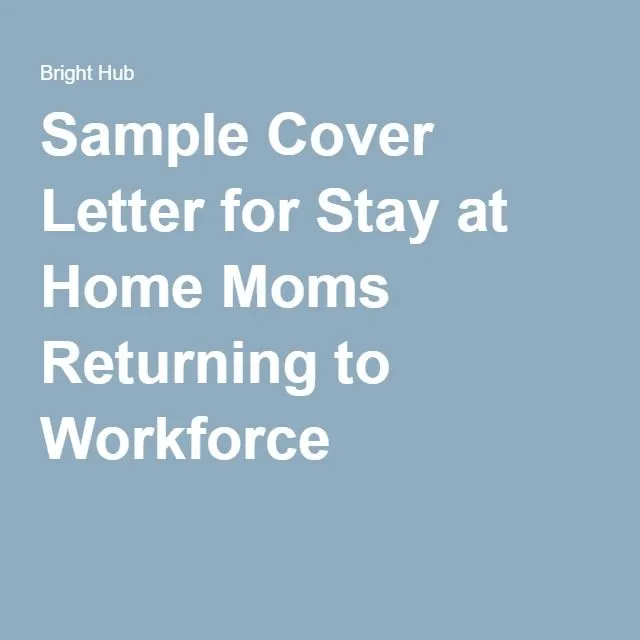Understanding the Stay-at-Home Mom Cover Letter
A stay-at-home mom cover letter is a crucial document for re-entering the workforce. It’s your chance to explain your career break, highlight your skills, and convince potential employers of your value. Unlike a standard cover letter, this one needs to address the elephant in the room — the employment gap. This means being proactive and framing your experience in a way that emphasizes your strengths and minimizes any perceived weaknesses. This document is your first impression and needs to be perfect. It should showcase not only your professional skills but also your commitment and adaptability.
Why a Cover Letter is Crucial
A cover letter is more than just a formality; it’s your chance to tell a story. It provides context to your resume, especially when you have an employment gap. It allows you to explain why you took time away from your career and what you’ve been doing during that time. This is especially important for stay-at-home moms, who often develop valuable skills in areas like project management, time management, and communication. A well-written cover letter allows you to connect your experiences to the job requirements and express your enthusiasm for the opportunity. It’s your chance to make a personal connection and stand out from other applicants.
Highlighting Transferable Skills
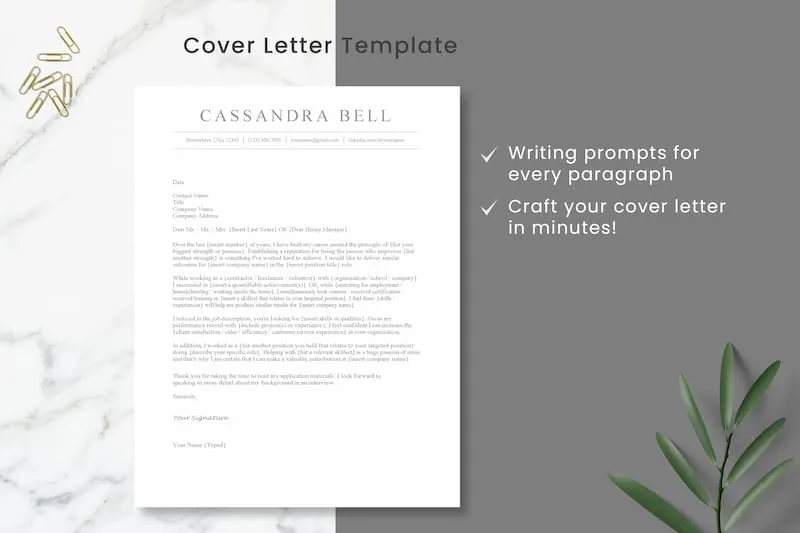
Stay-at-home moms possess a wealth of transferable skills that are highly valued in the workplace. These skills, often gained through managing a household and raising children, include organization, multitasking, communication, problem-solving, and leadership. Think about your daily routines, the projects you’ve managed, and the challenges you’ve overcome. Did you plan and execute a family vacation (project management)? Did you manage a household budget (financial skills)? Did you volunteer at your child’s school (communication and teamwork)? Frame these experiences in a way that highlights the skills relevant to the job you’re applying for. For instance, managing a household can be portrayed as project management, time management, and resource allocation.
Structuring Your Stay-at-Home Mom Cover Letter
A well-structured cover letter is easy to read and highlights the most important information. Start with your contact information, followed by the date and the employer’s contact details. Then, address the hiring manager directly. The body of the letter should include a compelling opening paragraph, a section highlighting your skills and experiences, a section addressing the employment gap, and a strong closing with a call to action. Keep the letter concise, typically no more than one page. Use clear and concise language, and proofread carefully for any errors. Consider using bullet points to highlight your skills and accomplishments to make them easy to scan.
Contact Information and Greeting
At the top of your cover letter, include your full name, address, phone number, and email address. Make sure your email address is professional. Following this, include the date and the hiring manager’s name and title, if known, along with the company’s address. Start your letter with a professional greeting, such as “Dear Mr./Ms. [Last Name],” If you don’t know the hiring manager’s name, use “Dear Hiring Manager” or “Dear [Department Name] Team.” Research the company to determine the appropriate level of formality for the greeting. This shows you’ve taken the initiative to personalize the letter. A personalized greeting is more likely to grab the hiring manager’s attention right away.
Opening Paragraph Grab Attention
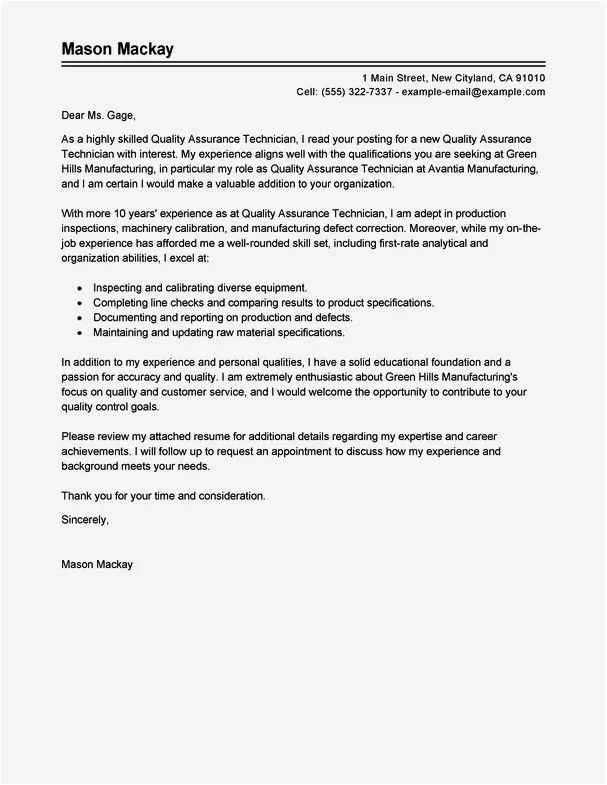
Your opening paragraph is your first opportunity to make a strong impression. Start with a hook that grabs the reader’s attention and clearly states the purpose of your letter. Mention the specific position you’re applying for and where you saw the job posting. Briefly highlight your key skills or experiences that align with the job requirements. Show your enthusiasm for the role and the company. Avoid generic opening lines; instead, tailor the introduction to the specific job and company. For example, mention a recent company achievement or your interest in the company’s mission. This will set the tone for the rest of the letter and encourage the reader to continue.
Showcasing Your Skills and Experiences
The main body of your cover letter should highlight your relevant skills and experiences. Focus on the skills that match the job requirements. Use specific examples to demonstrate your abilities. For each skill, provide a brief description of how you used it and the results you achieved. Quantify your accomplishments whenever possible. For example, instead of saying “Managed household finances,” say “Managed a household budget of $X per year, consistently staying within budget.” Use keywords from the job description to show that you meet the employer’s needs. This section should be specific and tailored to the job; don’t just list your duties but demonstrate the value you bring to the table. The aim is to convince the employer that you can perform the job well and contribute positively.
Education and Qualifications Section
In addition to your skills and experiences, briefly mention your educational qualifications. Include the name of the institution, your degree or diploma, and the year of graduation. If you have any relevant certifications or professional development courses, include them here. This section helps to demonstrate your foundational knowledge and commitment to professional growth. You can also highlight any academic achievements or relevant coursework that aligns with the job requirements. If your education is not recent, you can focus more on the skills and experiences section, but always include your educational background for a complete profile. This shows employers that you possess the necessary knowledge base.
Addressing the Employment Gap
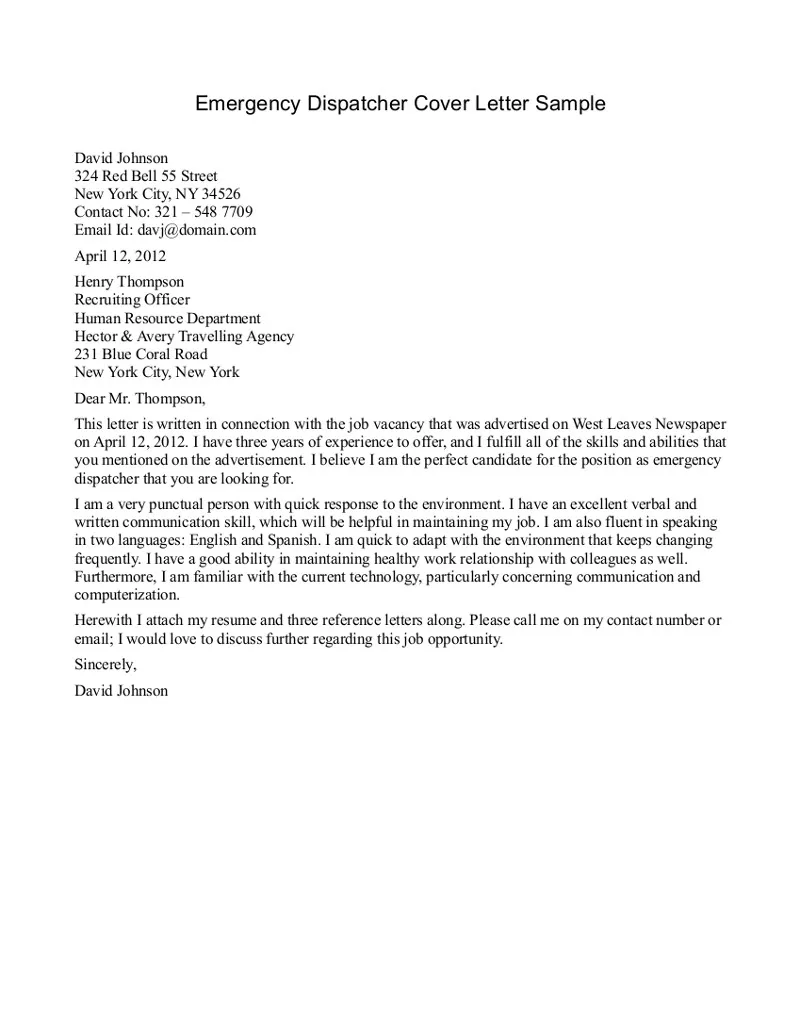
The employment gap is a common concern, so address it head-on. Be honest and straightforward about your time away from the workforce. Frame your experience as a stay-at-home mom as a period of skill development and growth. Focus on the skills you gained or honed during this time, such as project management, time management, and communication. Explain how these skills are transferable to the job you’re applying for. Avoid negative language or excuses. Instead, emphasize your commitment to your family and your eagerness to return to work. Mention any volunteer work, part-time jobs, or courses you took during your career break to show that you’ve been actively engaged and maintained your skills. This demonstrates initiative and proactive engagement.
Closing and Call to Action
In your closing paragraph, reiterate your interest in the position and express your enthusiasm for the company. Thank the hiring manager for their time and consideration. Include a strong call to action, such as “I am eager to discuss how my skills and experience can benefit your team” or “I look forward to the opportunity to speak with you further.” Provide your contact information again, and state your availability for an interview. End with a professional closing, such as “Sincerely” or “Best regards,” followed by your name. Proofread this section carefully to ensure it reflects your professionalism and commitment to the opportunity. The call to action should make it clear that you are ready and prepared to move to the next stage of the hiring process.
Sample Stay-at-Home Mom Cover Letter
Here’s a sample cover letter to help you get started. Remember to customize it to fit your specific situation and the job you are applying for:
[Your Name] [Your Address] [Your Phone Number] [Your Email Address]
[Date]
[Hiring Manager Name (if known), or “Hiring Manager”] [Company Name] [Company Address]
Dear [Mr./Ms./Mx. Last Name or Hiring Manager],
I am writing to express my enthusiastic interest in the [Job Title] position at [Company Name], as advertised on [Platform where you saw the ad]. With a background in [Your Field] and a strong foundation of transferable skills, I am confident I can make a significant contribution to your team.
For the past [Number] years, I have dedicated myself to raising my children. During this time, I have honed my project management, organizational, and communication skills by managing our household, coordinating family schedules, and overseeing various projects. These experiences have equipped me with the ability to prioritize tasks, manage deadlines, and work collaboratively, all essential qualities for success in this role.
My time as a stay-at-home mom has also provided me with opportunities to develop skills in [Specific Skills, e.g., budgeting, negotiation, event planning, etc.]. I am eager to leverage these skills and experiences to excel in the [Job Title] position.
I am particularly drawn to [Company Name] because [Mention something specific that interests you about the company]. I am confident that my dedication, adaptability, and passion for [Relevant Field] make me an ideal candidate for this role.
Thank you for your time and consideration. I have attached my resume for your review and welcome the opportunity to discuss my qualifications further. I look forward to hearing from you soon.
Sincerely, [Your Name]
Key Takeaways and Final Tips
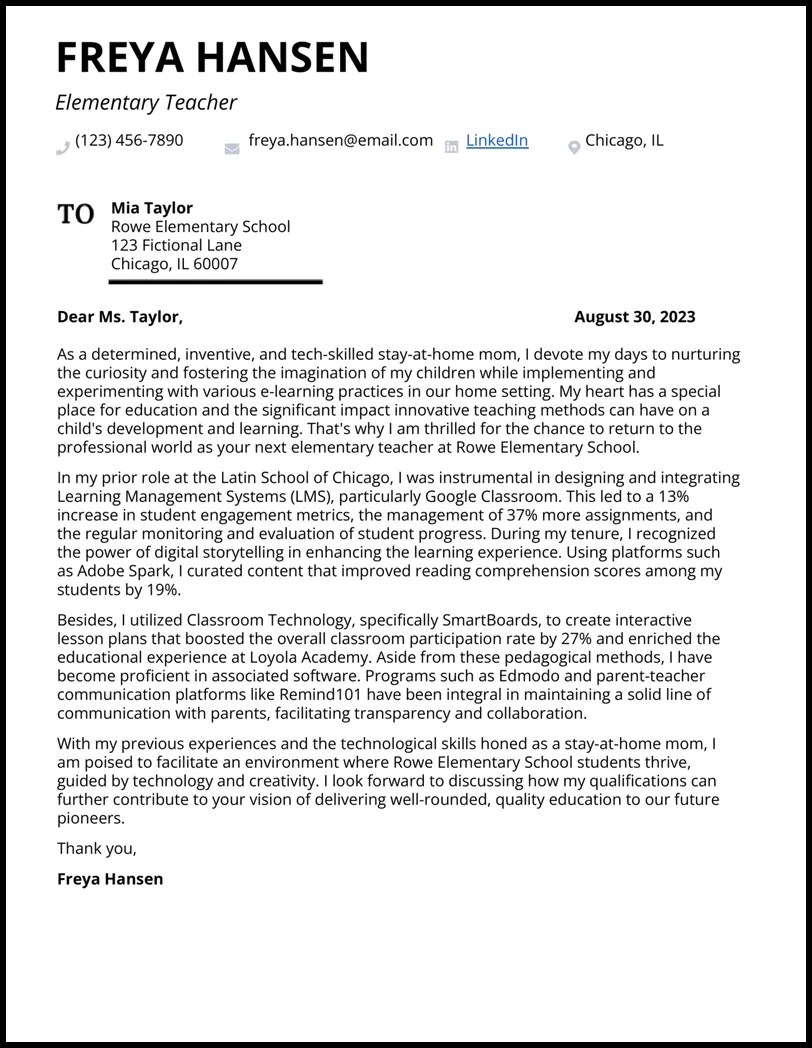
To create an effective cover letter, tailor it to each job application. Customize it to highlight the specific skills and experiences that match the job requirements. Proofread carefully for any grammatical errors or typos. Always address the employment gap proactively, focusing on your acquired skills. Keep the letter concise and focused on your value to the employer. Use a professional tone and formatting. Show enthusiasm for the role and the company. Seek feedback from trusted friends, family, or career counselors before submitting your letter. Finally, follow up with the employer a week after submitting your application. By following these tips, you can significantly increase your chances of landing an interview and re-entering the workforce.
